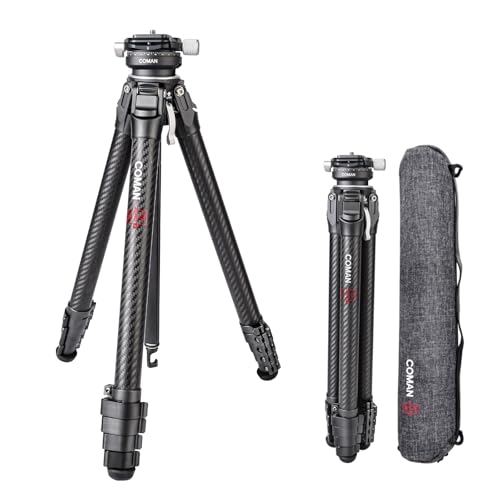Understanding Carbon Fiber Tripods: What Makes Them Stand Out?
Why Choose Carbon Fiber?
When considering a tripod, we often find ourselves weighing the materials used. Carbon fibre is renowned for being lightweight yet incredibly strong, making it an ideal choice for photographers who need to carry their gear for extended periods. Imagine hiking up a hill with a heavy aluminum tripod – it can tire you out. In contrast, a carbon fibre tripod allows for easier transportation without compromising stability. This is particularly beneficial for outdoor photographers who trek to reach the perfect shot.
Vibration Resistance and Stability
One of the standout features of carbon fibre tripods is their ability to dampen vibrations. Picture yourself shooting in a windy environment or on uneven ground. A carbon fibre tripod absorbs shocks and prevents camera shake, ensuring your images remain crisp and clear. This performance is essential for long exposures or telephoto shots where even the slightest movement can lead to blurry photos.
Key Features to Look for in a Carbon Fiber Tripod: A Practical Guide
Leg Locks: Twist vs. Flip
When selecting a carbon fibre tripod, pay attention to the leg locks. There are two primary types: twist locks and flip locks. Twist locks allow for a more streamlined design and often result in a lighter tripod, while flip locks can be quicker to operate, especially when time is of the essence. Think about your shooting habits – if you require speed, flip locks may be your best option.
Head Compatibility and Type
The type of tripod head you choose impacts your photography experience significantly. Whether you prefer a ball head for quick adjustments or a pan-and-tilt head for precise movements, ensure that the tripod you pick is compatible with your preferred head type. A solid connection is vital to keep your equipment stable and secure.
Weight and Folded Size
Weight is essential when you need to carry your tripod around. Check the specifications for both the weight and the folded size of the tripod. A lighter, compact tripod fits easily into your camera bag and doesn’t add extra strain during adventurous shoots. Consider how you’ll be transporting your gear and opt for a model that suits your travel style.
Choosing the Right Height and Weight Capacity for Your Needs
Finding the Right Height
Not all tripods are created equal in height. When considering your tripod’s height, think about your typical shooting posture. A tripod that can comfortably reach eye level reduces the need to bend down or stretch up, enhancing your shooting experience. Look for a tripod with adjustable height to cater to various shooting angles.
Load Capacity Considerations
Your tripod should be able to support not just your camera but also any lenses or accessories you may use. When choosing a model, check the load capacity and ensure it exceeds the weight of your heaviest setup. This adds a layer of safety and stability, protecting your equipment in the field.
How to Maintain Your Carbon Fiber Tripod for Longevity
Cleaning After Use
Maintaining your carbon fibre tripod starts with cleanliness. After each outdoor shoot, it’s wise to wipe down the legs and joints to remove dust, sand, or moisture. We recommend using a clean, dry cloth to prevent any buildup that could affect the mechanics. For sticky residues, a slightly damp cloth with a mild soap solution can work wonders.
Storage Tips
When your carbon fibre tripod isn’t in use, store it in a cool, dry place, ideally in a protective case. Avoid places with extreme temperatures or high humidity, which could degrade its materials over time. Ensuring your tripod is stored properly enhances its lifespan and keeps it in optimal condition for your next adventure.
Top Recommendations for Every Budget: Our Expert Picks
Budget-Friendly Options
For those of us on a tight budget, various entry-level carbon fibre tripods offer great quality without breaking the bank. Look for models that feature sturdy construction and essential features such as adjustable legs and compatibility with different heads. These tripods might not have all the bells and whistles but provide solid performance for hobbyist photographers.
Mid-Range Choices
If our budget allows for mid-range options, we can find tripods that combine advanced features like greater load capacities and improved stability. These tripods usually come with better build quality, making them a suitable choice for amateur to semi-professional photographers who require a reliable setup.
High-End Tripods
For professionals or serious enthusiasts, investing in a premium carbon fibre tripod pays off significantly. These models boast exceptional weight capacities, advanced stability features, and top-notch materials that ensure durability over time. While they may be a larger investment, the benefits they bring during professional shoots are undeniable.



















